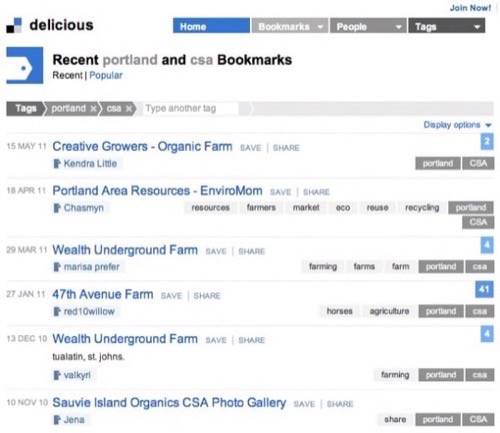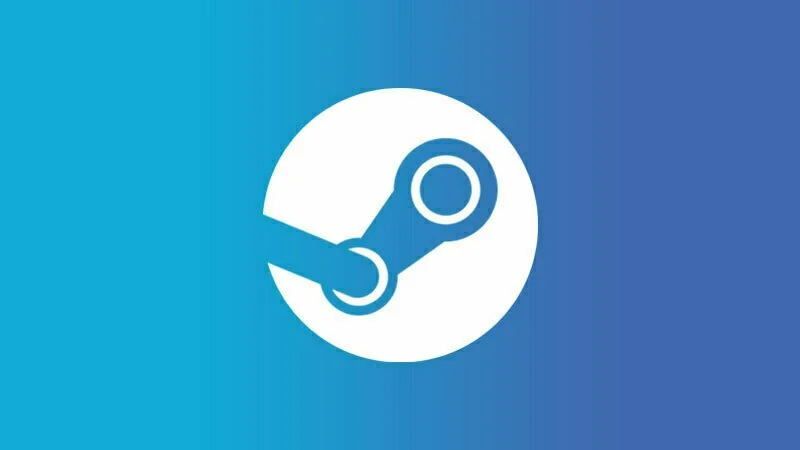What do you get when you collect and categorize the reading interests and intentions of millions of people exploring around the web? Fans of social bookmarking service Delicious have always believed you get a big win-win: bookmarkers are able to access links of interest them later, from any computer, and the rest of us get to watch from the outside and discover interesting new links in the wake of all that saving.

Delicious didn’t really work out that well in the long run, though, and, five years after it was acquired, then neglected, by Yahoo, it was bought this spring by a team led by Youtube co-founders Chad Hurley and Steve Chen. Jenna Wortham of the New York Times caught up with the new company this weekend and reported on some of the thinking behind the forthcoming rebirth of Delicious. What it needs, I believe, is to be easier to use, more relevant and more attractive in design.
Most everyone agrees that the biggest problem in growing Delicious has been its sparse, utilitarian design; something believed to turn off mainstream users when they come to the site. Chen and Hurley say that mainstreaming the site is one of their primary goals for the next version.
Below: A thing of beauty, but it could use pictures.

In order to make Delicious appealing to a wider variety of people than the web tech tinkerers who have appreciated it to date, Chen and Hurley say they plan on turning it into a destination site with:
- Topical “stacks” of multimedia content on particular topics, like a big event in the news.
- Bundles of links curated regarding a particular topic, like planning a vacation to a particular place.
- Personalized recommendations, hopefully based on aggregate data collected from the site and a user’s own behavior. It’s interesting; that’s roughly related to what Delicious founder Joshua Schachter is now doing with his new site, Jig. It’s very algorithm driven, under the covers.
That all sounds good. But I think it may need more. It’s all about helping new and non-technical users, maybe users who are less likely to explore a complex website, to capture the network effects of everyone else’s bookmarking with minimal work on their part. The old 90/10 rule may be applicable: if only 10% of the visitors to Delicious are actively bookmarking links themselves, and everyone is reading and searching, that could be a great turn of events. Hopefully a growing number of people will come to read and then 10% will convert and the ranks of the taggers will grow.
What I Think Delicious Will Need
I love Delicious. I think I’ve probably made use of it in ways that few people have (unfortunately) and have captured huge amounts of value from it. I really want it to thrive. Here’s what I think the new team behind it ought to consider. In response to this post, former Delicious product manager Simon Davison said to me on Twitter this morning, “All of those [ideas] and 200+ more were included as a part of the internal wiki that came with Delicious.”
1. Delicious is really a search engine, in large part. People are arguably growing disillusioned with the search offerings of Google and Bing and Google is already looking to serve up “what you want before you know to ask for it.” That’s something Delicious could help with. The company has a huge collection of legacy bookmarks, links validated by a human intention to read them and manual assignment of topic categories. That backlog should be made use of. I tell people all the time, when they ask me questions about Web technologies, to go look it up on Delicious. You want to know about the Semantic Web? Go check out http://www.delicious.com/popular/semanticweb You want to know some cool things about Portland, Oregon? http://www.delicious.com/popular/portland is a good place to start. Delicious should build the capacity to find popular links with two tags for more sophisticated structured searches. For example, we should be able to search http://www.delicious.com/popular/portland+coffee and not just http://www.delicious.com/tag/portland+coffee (though that’s cool too). Without having to look at URLs, which apparently most people can’t be allowed to see lest they wet themselves, but being able to keep using those same URL structures if you’re a grownup is important as well.
2. There needs to be some passive tagging enabled. The whole tagging experience should be made smoother and users ought to be able to opt-into having some categorization done automatically. The bulk of Delicious bookmarks already in the archives can help inform an algorithm that does that. Requiring that people bookmark and tag everything is kind of a drag, though, and an unnecessary burden to impose on users. In a world of real-time search and sharing people simply don’t go to the trouble of bookmarking links that often, they are easy enough to recall later if they are really important.
I would happily allow Delicious to automatically bookmark all the links I open and even propose tags for them. How about a subtle little pop-up in the corner of my page that says “page bookmarked and tagged as…” with 2 or 3 tags applied automatically. I can click to remove any bad ones, nuke them all if they are all wrong, or click a button to do it manually and apply my own tags. That would be awesome. If Delicious itself doesn’t build that interface, someone else ought to, on top of the API.
3. Mobile saving and reading should be a much bigger part of Delicious than it is. How often do you find yourself on your phone with a few minutes of free time that could be good for reading links you saved back at home? How about finding links on your phone and saving them for later reading when back home? Both of these things happen all the time now – whereas they didn’t happen at all when Delicious was born.
Those are a few of my ideas for how Delicious could be saved. I hope the new team can pull it off, however they go about trying. The idea of mass folksonomic categorization of the web, built on the data of casual web activity and served up for subsequent exploration and subscription is a beautiful, beautiful vision.










